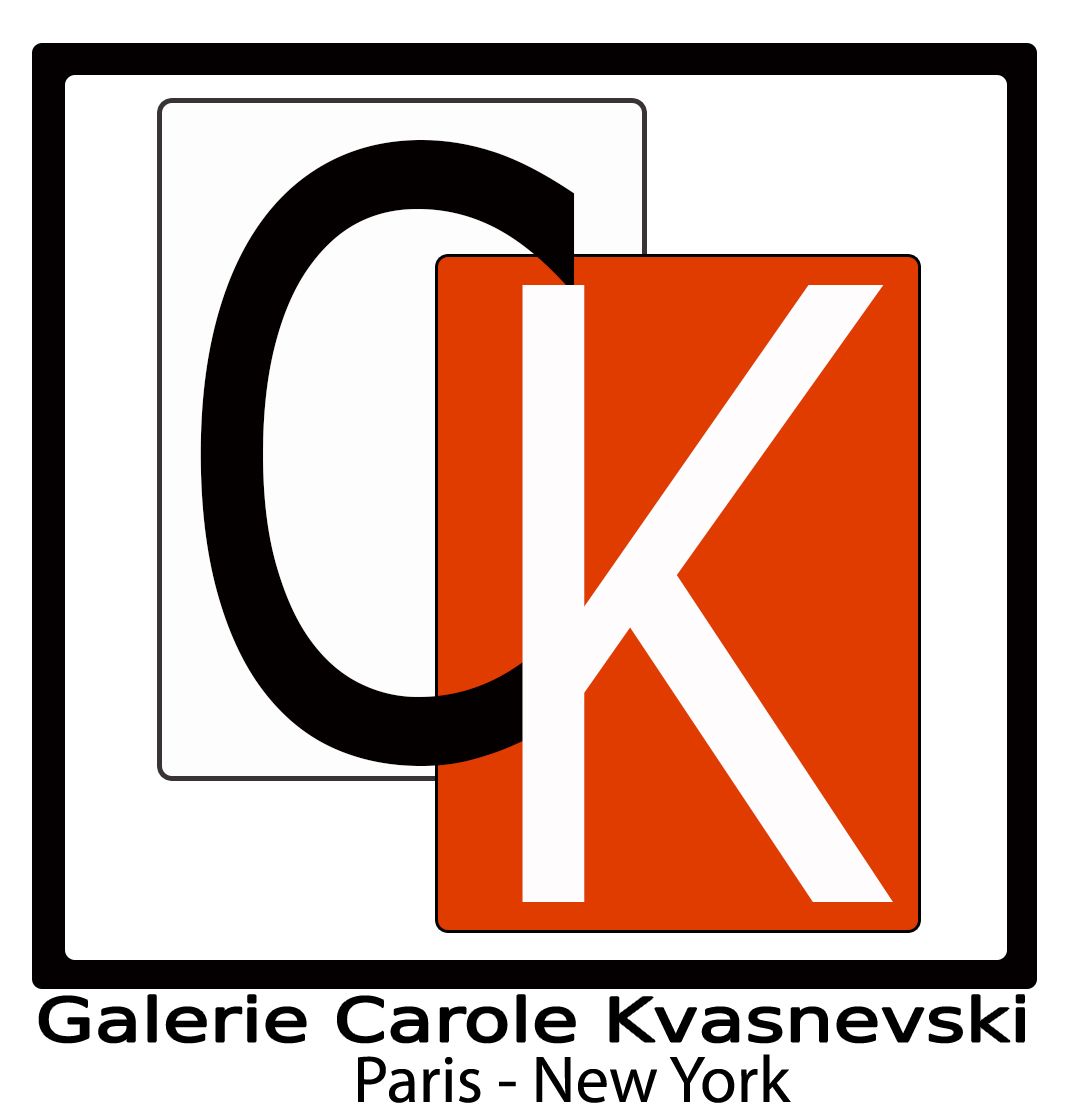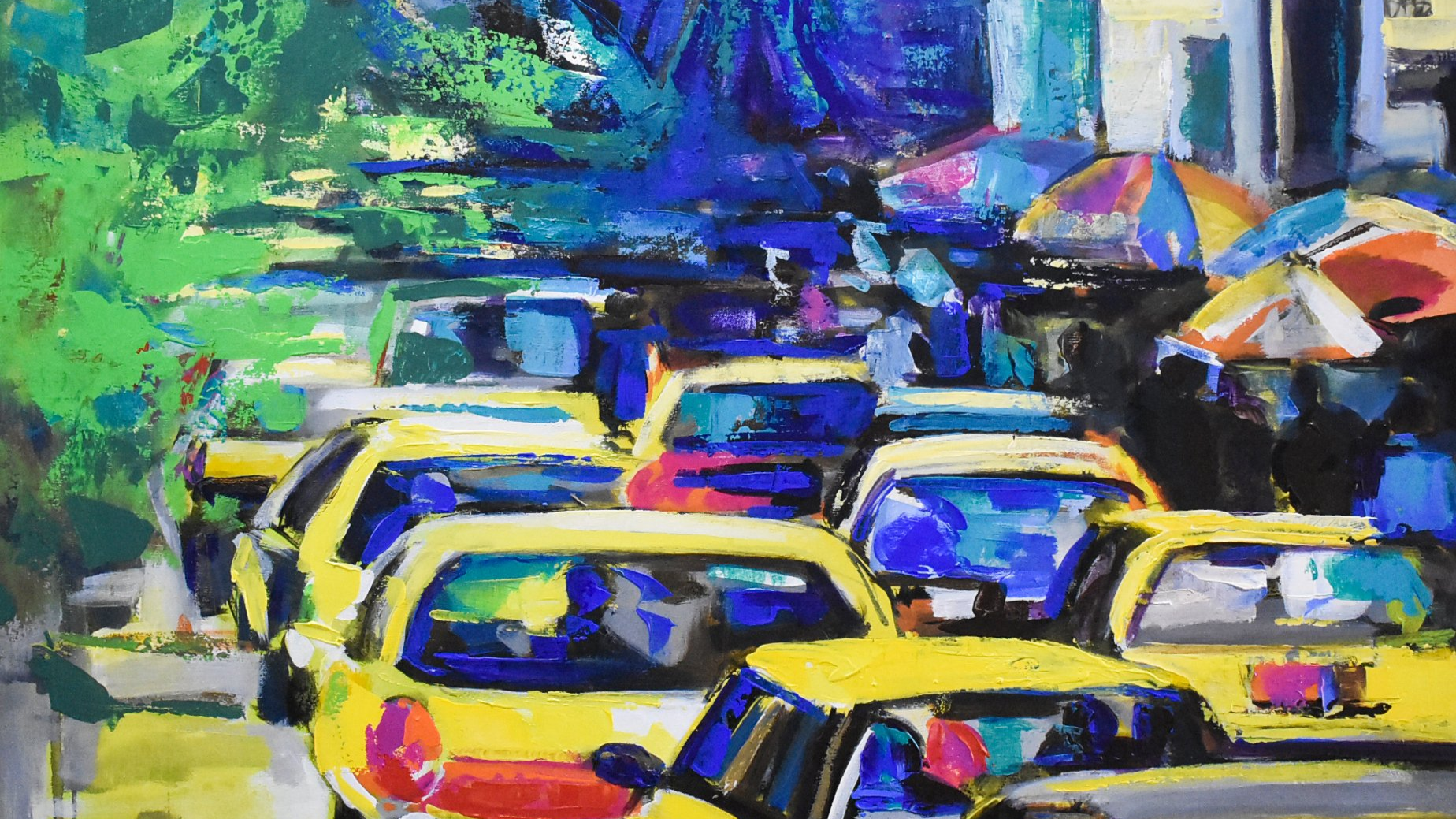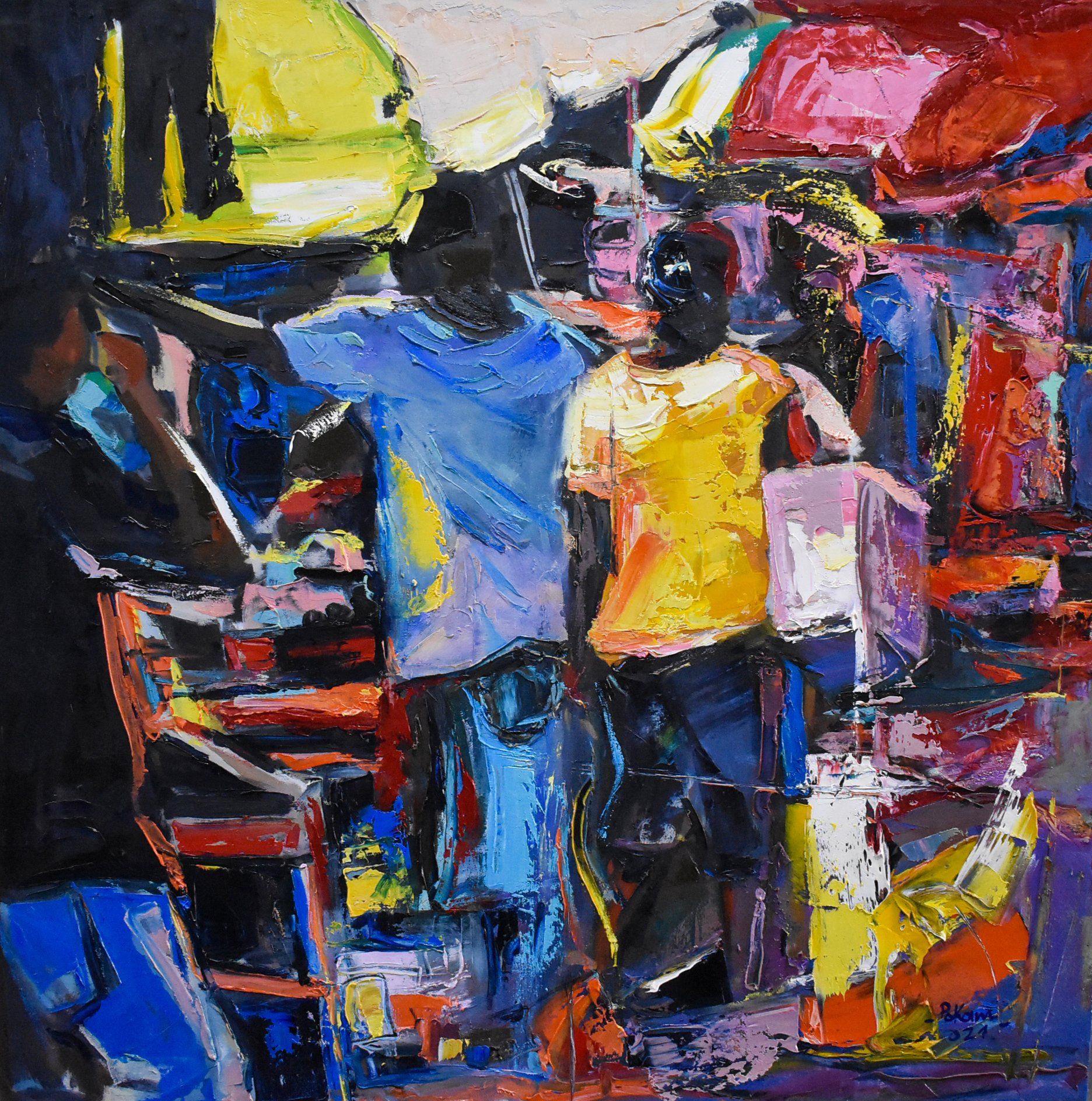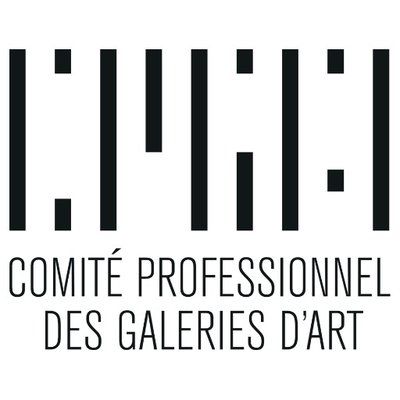To immerse oneself in the paintings of Rostand Pokam is to be promised a journey where the known mingles with the unknown, the soluble with the insoluble, and our senses are shaken. A journey that makes our certainties more fragile.
The urban landscape becomes a sensation, a jerky, dynamic music made up of movements and touches, varied like so many symphonies of colours orchestrated with a master's hand.
In a few precise strokes, Rostand Pokam captures the city, the markets, the tumult of daily life, the speed of our exchanges, our modes of movement, the agitation of our busy lives.
It is still necessary to take the time, to settle down, to define the elements composing the scenes, tarpaulins, stalls, bowls, buckets, calabashes, fabrics, motorbikes. Let yourself be caught up in the skies, which are the gateway to new worlds.
While the ballet of bodies, the polyphonic melody of dresses, fabrics, tank tops and shorts, headdresses and parasols, familiar gestures carry us away.
To enter a painting by Rostand Pokam is to open up to the vibrations of the soul, whether of the city, the painter or the canvas. Those of the faceless characters, but far from being ghosts, they are very present. The material is palpable.
Rostand Pokam knows his score and plays a back and forth between figurations and abstractions. So here we are, off to inner lands and places of sharing, following the rhythms of the colours that set the tempo. Pokam multiplies his experiments.
Here, close to the impressionists, there, he reminds us of the painters of Die Brücke, the interpretation of the Parisian or Abidjan crowd of a Fromanger and elsewhere, he makes us sway in the manner of Douala Sérénade by Manu Dibango.
The artist takes the pulse of the city, examines it, dissects it and brings out its entrails.
Through his work, Rostand Pokam unfolds the possibilities of telling our story. To appreciate it is also to put an eye on our emotions, our relationships, our societies, our beings, our environment. Their tumults, transformations, their commonality, their importance.
Flavien Louh







